The essential allure of the sugarhouse: Why Steve’s Sugar Shack is the most exclusive place to eat in America
| Published: 04-03-2023 11:54 AM |
There are two main ways we experience taste sensations: swallowing and inhaling. Food and drink have been discussed plenty in the sensory media, tasty inhalants less so.
The under-coverage of inhalants could be explained in various ways. Cigarettes have recently been classified as Satan’s exclusive domain. Cigars and their humidors belong to a dying bastion of douchigarchs. Inhaling weed is emergent, but public tasting and smelling are still illegal.
I got started with inhaling things much younger. All the most intoxicating aromatic experiences of my childhood in western Massachusetts happened at maple sugarhouses. This was family-friendly inhaling, and always happened in an old wooden shack with snow on the ground outside.
Inside the shack, a gleaming steampunk boiler would be stoked with fresh firewood, every 15 or 20 minutes, by a weathered man in impervious gloves, and at these moments, the magic room would cloud up even more thickly with microscopic droplets of the most delectable air I have ever smelled: maple steam.
Smells, like primary colors, aren’t well described by adjectives. They can only be described by comparison to other smells. Smells that aren’t comparable to other smells just can’t be described in words. This is why wine writing is a ludicrous activity.
I was a child when I last went to a maple sugarhouse. In the years since, though, I could always conjure up the unique aroma of maple steam in my mind. It was recorded onto my olfactory bulb with extraordinarily high fidelity, as only smells can be. When I stuck my face into a cloud of Massachusetts maple steam last weekend, for the first time in decades, it was the same experience again — just stronger and better, in the way that real things are.
Maple syrup, like wine, has sensory characteristics that vary by terroir. The soil is different throughout New England. Across the snowy green hills of western Massachusetts you can find the world’s best syrup, golden, amber, and dark; irresistible bite-sized maple candies pressed into leaf, animal, and human forms; and jars of thick maple cream.
The best way to experience maple steam is to inhale the real thing by going for a pancake breakfast at one of the last remaining sugarhouses in western Massachusetts that still give us this gift on a few weekend mornings every year.
Article continues after...
Yesterday's Most Read Articles
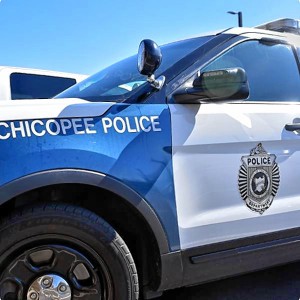 South Hadley man fatally shot in attempted robbery
South Hadley man fatally shot in attempted robbery
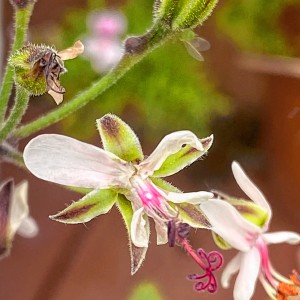 Smith College exhibit explores Sylvia Plath’s botanical inspiration
Smith College exhibit explores Sylvia Plath’s botanical inspiration
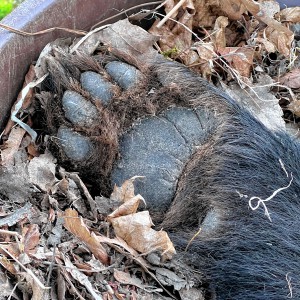 Holyoke man finds bear paw in his yard
Holyoke man finds bear paw in his yard
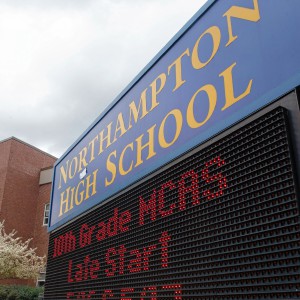 Guest columnist Bill Dwight: How to make sense of Northampton’s school budget dilemma
Guest columnist Bill Dwight: How to make sense of Northampton’s school budget dilemma
 South Hadley’s Lauren Marjanski signs National Letter of Intent to play soccer at Siena College
South Hadley’s Lauren Marjanski signs National Letter of Intent to play soccer at Siena College
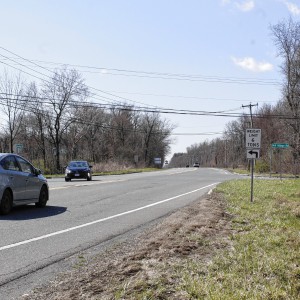 Deerfield residents petitioning to fix ‘dangerous’ intersection
Deerfield residents petitioning to fix ‘dangerous’ intersection
Maple sugar shacks are expansive in their reach, places where servers dote equally on 2-year-olds and 90-year-olds. But in their capacity and opening hours, our local shacks are extraordinarily exclusive. Steve’s Sugar Shack of Westhampton, for instance, is open only 14 days this year, from 7 a.m. to 1 p.m.: Saturdays and Sundays from Feb. 25 to April 1, plus Saturday, April 8, and Saturday, April 15.
Given this evidence, I claim that Steve’s is currently the most exclusive restaurant in America.
Nick Paumgarten’s riveting 2016 New Yorker piece, “The Most Exclusive Restaurant in America,” presents a dissenting view on this topic. Paumgarten describes a 26-seat farmhouse restaurant called Damon Baehrel, in the hamlet of Earlton, New York, west of Coxsackie, a half-hour south of Albany, which serves “Native Harvest Cuisine” and has a five- to 10-year-long waitlist that was suspended for six years from 2014 to 2020 while the restaurant cleared the backlog.
A meal at Damon Baehrel takes more than five hours, and the current price is $475 per person, not including drinks, tax, or tip.
Although Paumgarten, at certain points in the article, questions whether the restaurant actually exists (and this debate still goes on in the culinary community), all signs from Baehrel’s website point to the existence of plenty more than 14 days of service per year there. So the shack run by husband and wife team Steve and Julie Holt is more exclusive, and it smells better, too.
I say this without having visited Damon Baehrel. I’ll report back in 2034.
There are dozens of family-owned maple farms around western Massachusetts, but few still do pancake breakfasts. Recent losses include the beloved Gould’s of Shelburne Falls, whose owner-operators retired in 2022.
For almost everyone in the business, it’s a part-time gig, three months a year at most. Only a couple of farms are big enough to be year-round businesses. Younger generations have found more promising career opportunities elsewhere, and fewer elders are still tending the maple fires.
Maple syrup is produced by tapping sap from trees. The sap is collected in tin pails or hoses. Maple farmers collect about 70 gallons of sap for every gallon of syrup they produce, but this varies dramatically throughout the sugaring season, which might only last seven or eight weeks.
Early in the season, the air is cold, and the sap yields the limited-production “light” or “golden delicate” syrup. For the bulk of the season, the syrup comes out “amber” or “rich” — this is the kind you probably know best. Late in the season, as the air warms further, the sap runs sweeter and the syrup is “dark” or “robust,” with the thickest viscosity and the boldest maple flavor.
Steve Holt is one of the last practitioners of this lost (or fast being lost) art. He has been tapping trees and boiling syrup since he was 12. On a typical day during the two-month season, Steve and his team of sugaring veterans might boil 800-plus gallons of sap down to 12 gallons of syrup.
This year he will produce just over 400 gallons of syrup, his biggest year ever. All of it gets sold straight from his store during the pancake breakfasts or by appointment at other times.
If you’re lucky enough to snag a table at Steve’s Sugar Shack, you’ll sit in the middle of a fountain of maple wisdom. I finally made it in last Saturday with a party of eight that included an 8-year-old and a 2-year-old. Steve’s is packed all morning, but their system is as robust as the late-season product: First you order and pay at the counter, then you wait a while for your seats and a while longer for your food.
In the meantime, you can make new friends at your long communal table, church-supper style; climb up a ladder, peer into the maple-steam abyss of the boiler and get a double dose of the intoxicating steam; watch Steve explain how it’s made or tell stories about the business; bask in the roar of the boiler as new logs get periodically loaded; or best of all, savor a $1 scoop of maple cream in a mini kiddie cone for the ultimate pancake-breakfast appetizer.
From an economic perspective, the business model of Steve’s Sugar Shack is ludicrous. For 10 or 15 bucks per person, they’ll seat you in a magically steamy country house and serve you a stack of Julie’s blueberry pancakes, which have fluffy insides and crispy outsides and are yeasty and delicious all the way through, plus whatever fixings you fancy — bacon, sausage, home fries, eggs — and, of course, a bottomless squeeze-bottle of seasonal maple syrup. (A fifth of annual production is used up at the restaurant.)
Instead of raising prices, as rational economic behavior would dictate, Steve and Julie choose to keep prices accessible to everyone. They are not economists but saints, which is pretty much the opposite.
One of the other pancake-breakfast survivors is the North Hadley Sugar Shack, which I visited last Sunday. As at Steve’s, you’re served in a charming wooden house and it’s a whole-morning undertaking — at least an hour and a half from arrival to first bite of pancake.
We passed the time being entertained by exploring the eclectic gift shop (the North Hadley Market) and attached farm, and watching the fire get stoked every 20 minutes. This year they’re doing weekend breakfasts until Saturday, April 8, plus a few waffle dinners in the coming weeks and pizza and small plates during the maple off-season under the name The Shack 181.
Worthington’s High Hopes Farm also does pancake breakfasts with their own syrup (from 4,000 trees) Saturdays and Sundays. Their 2023 breakfast season ends April 2.
For a couple of months per year, across these hills and rivers, our maple trees surrender their blood for our pancakes. They do not die in the process — trees can be tapped for more than 100 years — but they do give a lot of themselves.
Their sacrifice is our well-being. The farmers who harvest their gifts treat the trees with due honor. The aroma of a maple sugarhouse in the Massachusetts spring is a warm cradle, an envelopment in care, in the sacrifices we make for our families and the fire of love we inhale back in.
Robin Goldstein is the author of “The Menu: Restaurant Guide to Northampton, Amherst, and the Five-College Area.” He serves remotely on the agricultural economics faculty of the University of California, Davis. He can be reached at rgoldstein@ucdavis.edu.

 Valley Bounty: Grass-fed animals that feed the grass: Gwydyr Farm in Southampton focuses on ‘restoring the connection between land, food and people’
Valley Bounty: Grass-fed animals that feed the grass: Gwydyr Farm in Southampton focuses on ‘restoring the connection between land, food and people’ Weekly Food Photo Contest: This week’s winner: Mary Chicoine of Easthampton
Weekly Food Photo Contest: This week’s winner: Mary Chicoine of Easthampton  Speaking of Nature: A romantic evening for two birders — To hear the wonderful sounds of the Saw-whet Owl one must go outside at night
Speaking of Nature: A romantic evening for two birders — To hear the wonderful sounds of the Saw-whet Owl one must go outside at night Speaking of Nature: Where have all the birds gone?: They’re there, and here’s a handy tool to keep track of their appearances
Speaking of Nature: Where have all the birds gone?: They’re there, and here’s a handy tool to keep track of their appearances
